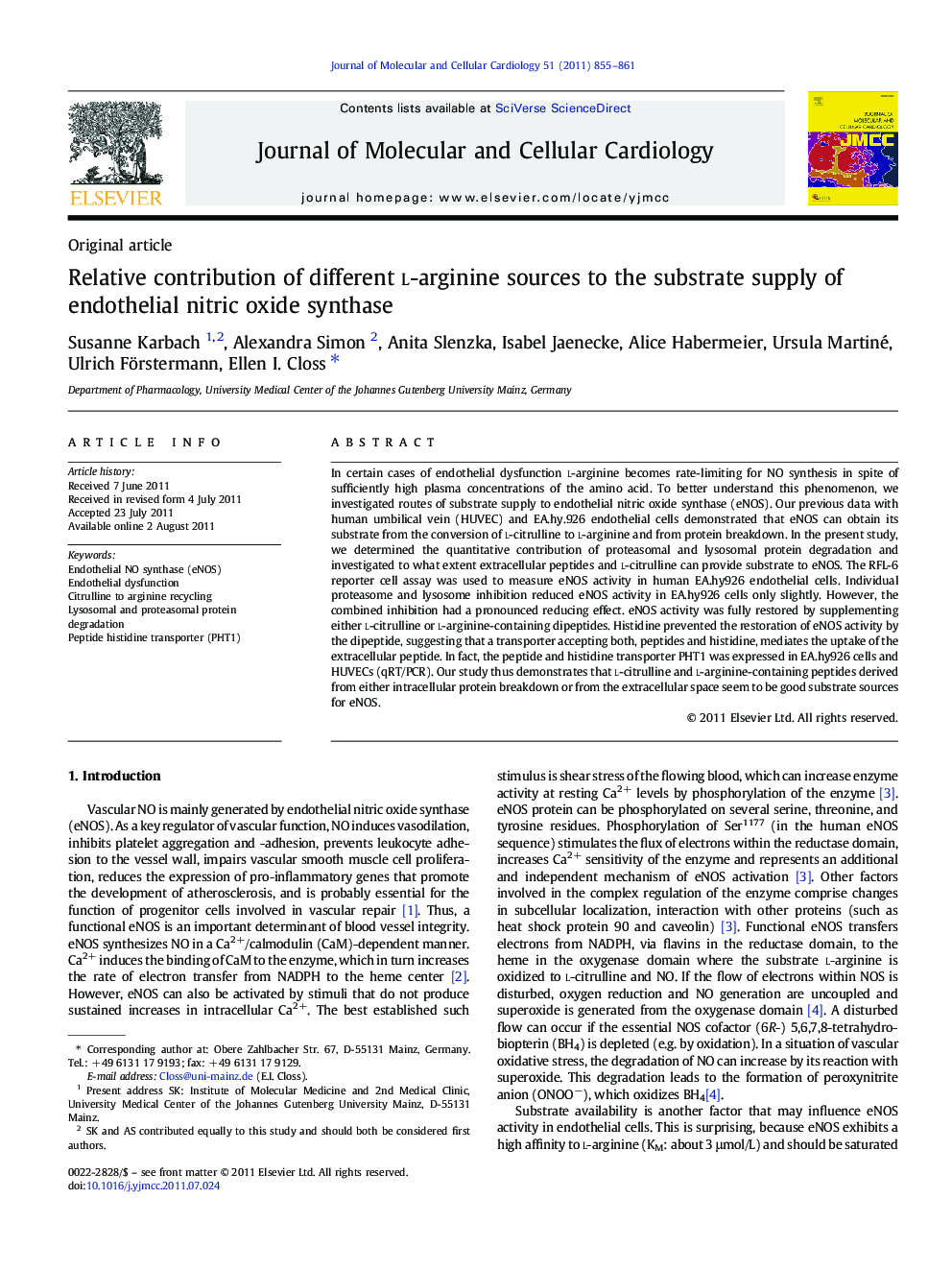| Article ID | Journal | Published Year | Pages | File Type |
|---|---|---|---|---|
| 2190761 | Journal of Molecular and Cellular Cardiology | 2011 | 7 Pages |
In certain cases of endothelial dysfunction l-arginine becomes rate-limiting for NO synthesis in spite of sufficiently high plasma concentrations of the amino acid. To better understand this phenomenon, we investigated routes of substrate supply to endothelial nitric oxide synthase (eNOS). Our previous data with human umbilical vein (HUVEC) and EA.hy.926 endothelial cells demonstrated that eNOS can obtain its substrate from the conversion of l-citrulline to l-arginine and from protein breakdown. In the present study, we determined the quantitative contribution of proteasomal and lysosomal protein degradation and investigated to what extent extracellular peptides and l-citrulline can provide substrate to eNOS. The RFL-6 reporter cell assay was used to measure eNOS activity in human EA.hy926 endothelial cells. Individual proteasome and lysosome inhibition reduced eNOS activity in EA.hy926 cells only slightly. However, the combined inhibition had a pronounced reducing effect. eNOS activity was fully restored by supplementing either l-citrulline or l-arginine-containing dipeptides. Histidine prevented the restoration of eNOS activity by the dipeptide, suggesting that a transporter accepting both, peptides and histidine, mediates the uptake of the extracellular peptide. In fact, the peptide and histidine transporter PHT1 was expressed in EA.hy926 cells and HUVECs (qRT/PCR). Our study thus demonstrates that l-citrulline and l-arginine-containing peptides derived from either intracellular protein breakdown or from the extracellular space seem to be good substrate sources for eNOS.
Graphical abstractFigure optionsDownload full-size imageDownload high-quality image (106 K)Download as PowerPoint slideHighlights► Different arginine pools are accessible to NO synthase in endothelial cells (eNOS). ► Pool I is replenished by plasma membrane transporters (CATs and y+LATs). ► Pool IIA consists of citrulline to arginine recycling and can sustain up to 100% NO synthesis. ► Pool IIB is furnished by lysosomal and proteasomal protein breakdown or by extracellular peptides. ► The histidine and peptide transporter PHT1 may serve as one entry route for these peptides.
